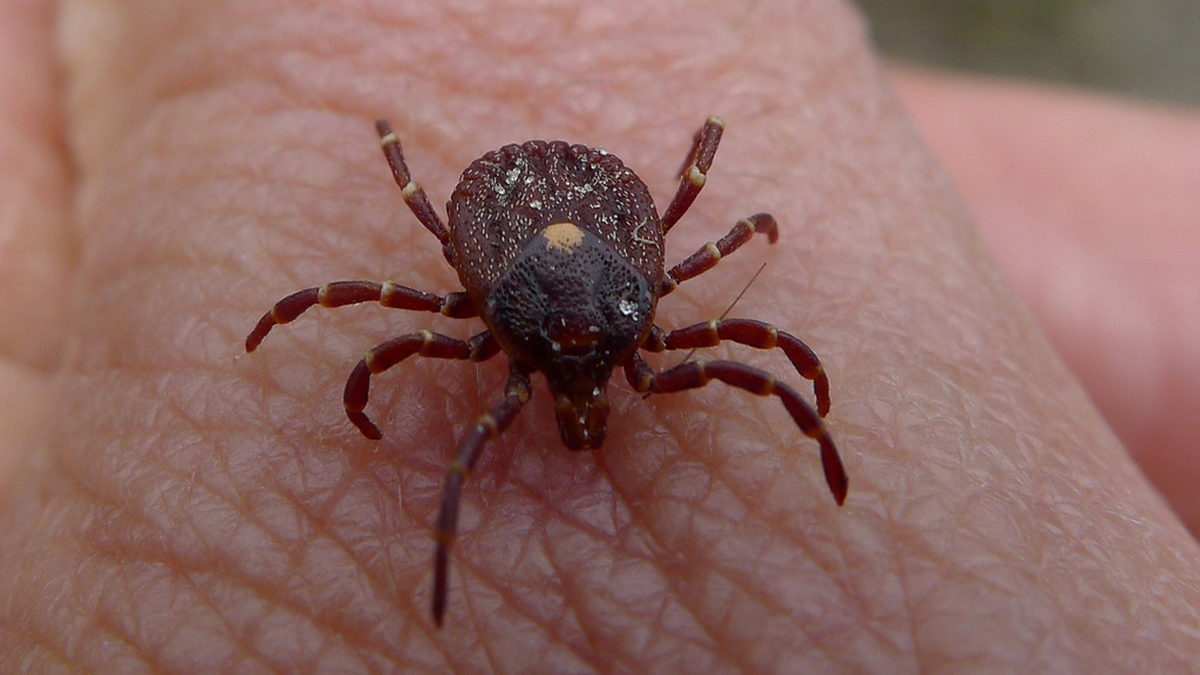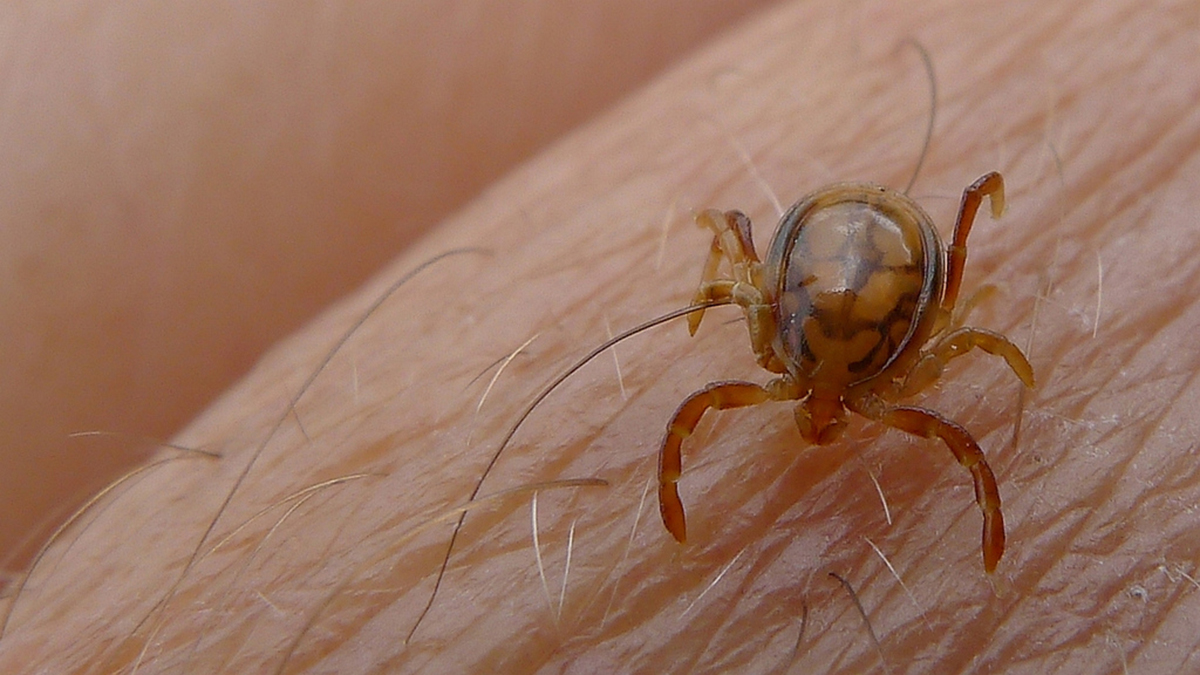Signs and symptoms of Lyme disease
The signs and symptoms of Lyme disease are clear cut and the diagnosis of this condition is mostly made on a clinical basis. The signs and symptoms can be divided into early and later ones and can include the following:

Early signs and symptoms
- Skin rash - from 3-30 days after the patient is bitten by an infected tick, there is the formation of a non-itchy, red, expanding area which may have a clear centre at the bite site. This is the diagnostic "bull's-eye pattern" rash (erythema migrans) which appears and it expands slowly over days and can spread up to 30 centimetres in diameter.
- Flu-like symptoms - the patient can experience fevers, rigors or chills, body aches, fatigue and headaches.
Later signs and symptoms
- The erythema migrans rash appears in other areas of the body.
- Joint pain - severe joint swelling and pain can occur at the knees, but it can shift around and involve other joints as well.
- Neurological issues - these problems can occur weeks, months or even years after the initial infection. They can include meningitis, Bell's palsy, impaired muscle movement and weakness or numbness of the limbs.
Risk factors for contracting Lyme disease
The following risk factors need to be taken note of in order to try and avoid exposure to possibly infected deer ticks.
- Spending time or living in heavily wooded or grassy areas - deer ticks are especially prevalent in heavily wooded or grassy areas. Children who spend a lot of time in these areas and adults with outdoor occupations are at increased risk here.
- Having exposed skin - when one is in an area where deer ticks are prevalent, it's important to wear long sleeved shirts and long pants as these ticks easily attach to bare skin. Also, watch out that pets don't wander around in these areas either.
- Not removing ticks properly or in time - the risk of contracting Lyme disease is decreased if the tick is removed within a couple of days from the skin.
Complications of Lyme disease
If Lyme disease is left untreated, then certain complications can develop. These include the following:
- Chronic joint inflammation known as Lyme arthritis which can especially affect the knee.
- Impaired memory.
- Neurological issues such as a facial palsy or neuropathy.
- Heart rhythm irregularities.
Confirmation of the diagnosis
Besides the typical rash which appears in Lyme disease, all the other symptoms and signs can occur in other conditions as well. It's therefore important to have some blood tests performed where the diagnosis can be confirmed in order to initiate the correct treatment protocol.
READ Lyme Disease - How Can It Be Treated?
These tests may include the following:
- ELISA test - this test detects the antibodies to the causative bacterium. Sometimes it may provide false-positive results and is therefore not used solely to make the diagnosis.
- Western blot test - this is performed if the ELISA test is positive in order to confirm the diagnosis.
Management of Lyme disease
Antibiotics
Antibiotic therapy is the golden standard for the treatment of Lyme disease. The quicker antibiotics are initiated, then the faster and more complete the patient will recover.
- Oral antibiotics - this treatment is initiated in early-stage Lyme disease and includes the use of doxycycline for adults and children older than age 8. Amoxicillin or cefuroxime can be used in adults, children younger than 8 as well as pregnant or breastfeeding women. The duration of the course is usually recommended for 14-21 days but there are studies which have shown that a 10-14 day course is effective enough.
- Intravenous antibiotics - the intravenous route for antibiotic administration is suggested if the central nervous system is involved. The usual recommended course for this route is 14-28 days. This is an effective route for eliminating the infection, but patients can take some time to recover from their symptoms even after treatment has been completed. Intravenous use if antibiotics for this length of time can cause some unwanted side-effects such as persistent diarrhoea.

Prevention
Looking at the risk factors for contracting Lyme disease, one can see that certain preventative measures need to be taken in order to try and avoid this situation from occurring.
- Try and tick-proof the yard by mowing down long grass and keeping woodpiles in the sun.
- Wear long clothes, gloves and a hat when walking around areas where deer ticks are found.
- Apply insect repellents which contain a 20% or higher concentration of DEET. Permethrin containing products can be applied to clothes.
- Remove a tick as soon as possible and use tweezers to slowly remove it by the head or mouth. Don't crush or squeeze the tick. Once removed, dispose of the tick and apply an antiseptic on the bite mark.
- Don't assume that one can be immune to Lyme disease as it can be contracted more than once.
Post-treatment Lyme disease syndrome versus chronic Lyme disease
Post-treatment Lyme disease syndrome occurs when a patient still continues with symptoms such as fatigue and muscle and/or joint aches after the Lyme disease was treated with antibiotics. In a small percentage of cases, these symptoms can last for up to 6 months and it's very important that this information is properly conveyed to the affected patient. The good news here is that this syndrome almost always resolves in time on its own.
The reason why this syndrome occurs in not known, but some experts believe that certain patients who contract Lyme disease are predisposed to developing an autoimmune response. This then results in residual tissue and immune system damage, during the initial infection, and this contributes to their symptoms.
READ New Tick-Borne Infection Similar To Lyme Disease Appears In US and UK
Patients who are experiencing the symptoms of post-treatment Lyme disease syndrome should discuss this issue with their doctors so that they are offered symptomatic relief. It's also important at this time to maintain a healthy lifestyle by eating a healthy diet, being reasonably active and getting plenty of rest. This situation can also cause increased tension and stress, so, incorporating relaxation techniques such as massage therapy, yoga, prayer, meditation and breathing exercises can be of benefit.
- www.mayoclinic.org/diseases-conditions/lyme-disease/basics/definition/con-20019701
- www.cdc.gov/lyme/postlds/
- Photo courtesy of John Tann: www.flickr.com/photos/31031835@N08/6368338667/
- Photo courtesy of John Tann: www.flickr.com/photos/31031835@N08/6885765803/
- Photo courtesy of John Tann: www.flickr.com/photos/31031835@N08/6368338667/


Your thoughts on this